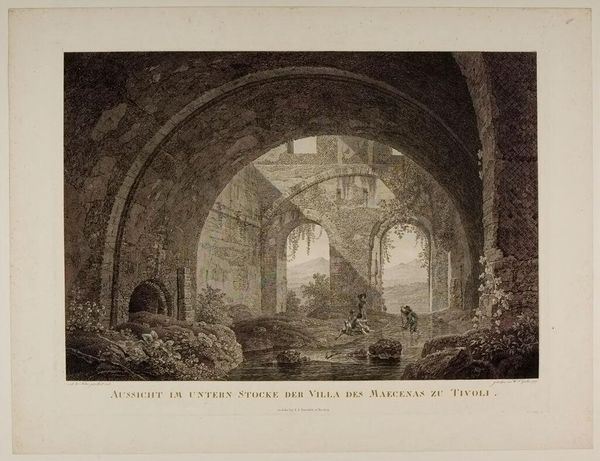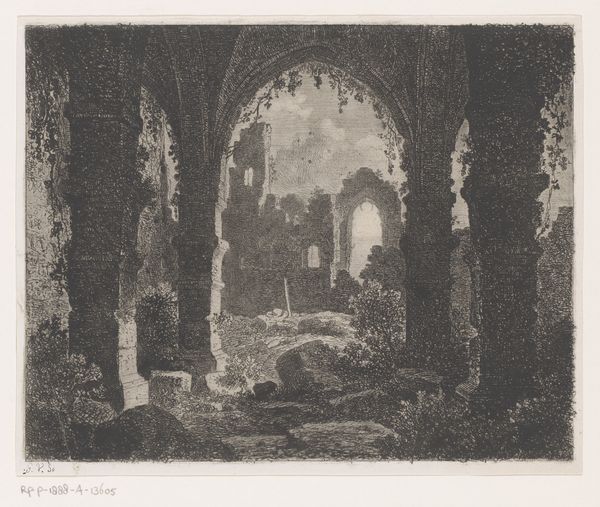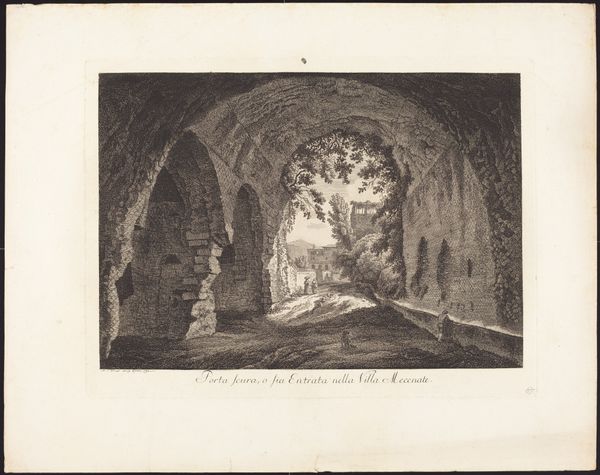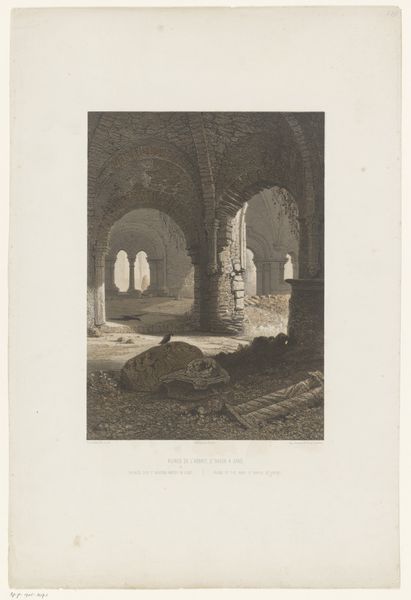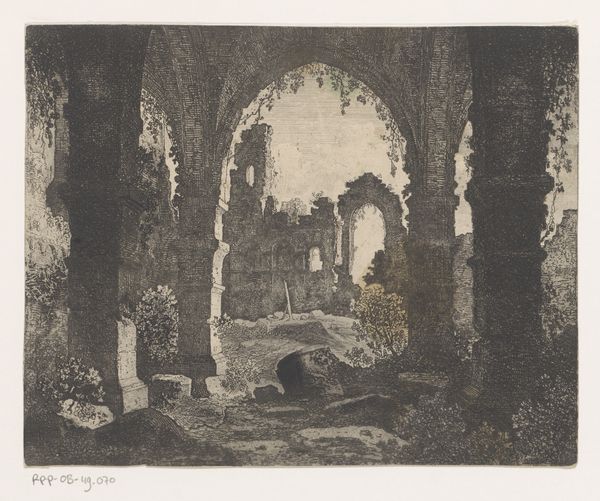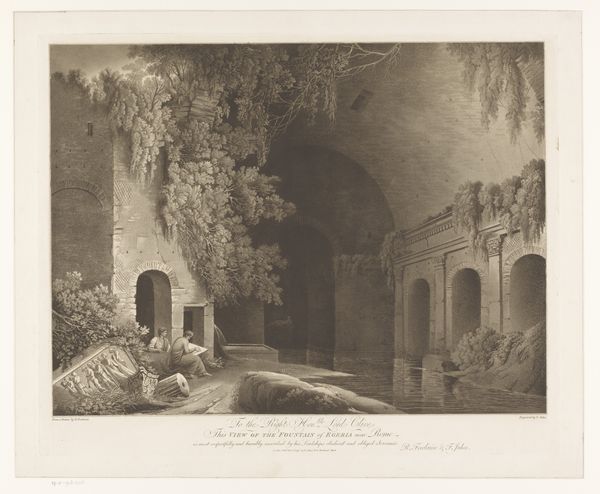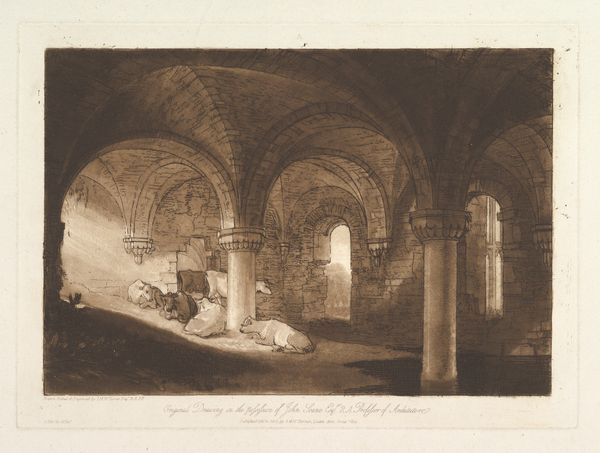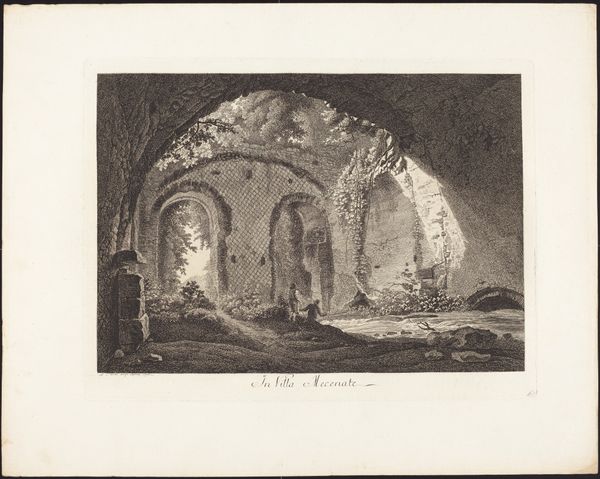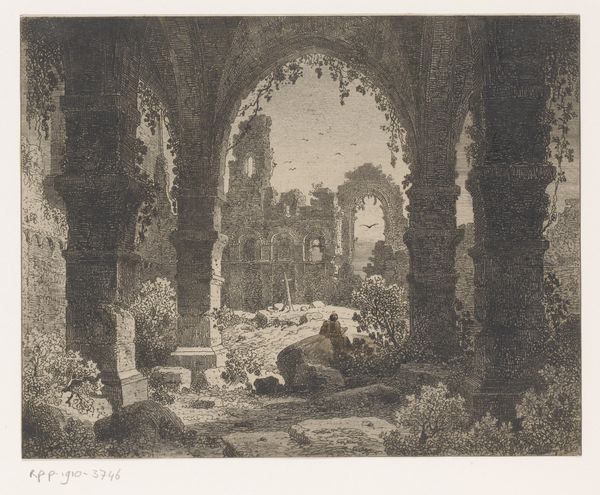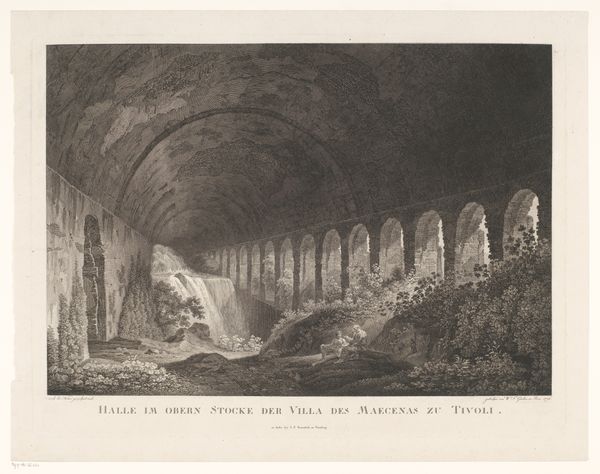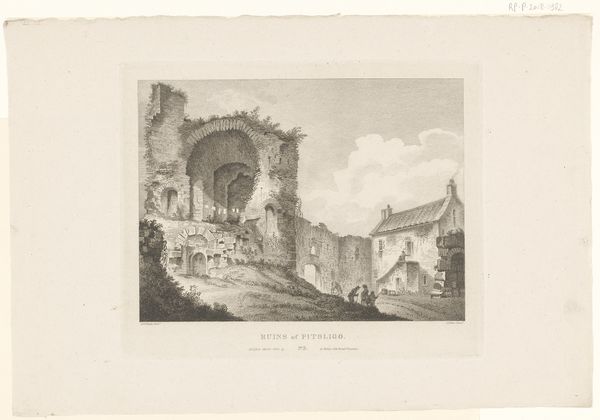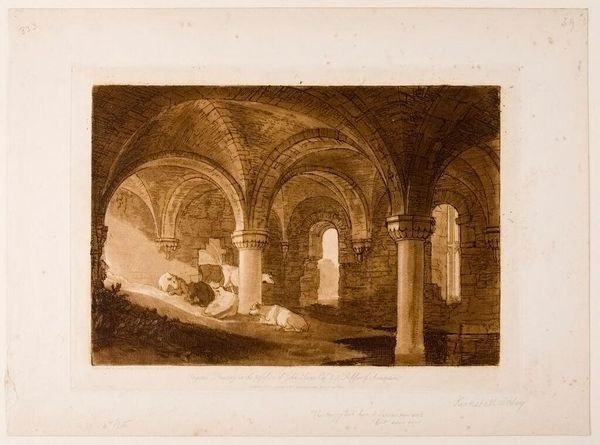
print, engraving, architecture
#
neoclacissism
# print
#
old engraving style
#
landscape
#
white palette
#
house
#
history-painting
#
engraving
#
architecture
Dimensions: height 435 mm, width 577 mm
Copyright: Rijks Museum: Open Domain
Curator: This is Friedrich Wilhelm Gmelin's engraving, "Zicht op de benedenverdieping van de Villa Maecenas in Tivoli," dating back to 1796. Editor: It has such a strangely serene, almost ghostly quality. The delicate lines evoke a powerful sense of antiquity and decay. The ruined architecture dominating the center really stands out. Curator: Indeed, the meticulous detail emphasizes the principles of Neoclassicism: rational structure, precise lines and geometric shapes, all within an almost dream-like vision of classical antiquity. Look at how Gmelin captures the light. Editor: Precisely. Gmelin's emphasis on rendering these Roman ruins asks the viewer to consider notions of impermanence and loss and is situated during a volatile period in Europe, politically, socially, and culturally. There’s a tension between romanticizing antiquity and confronting the realities of societal and environmental degradation and perhaps hints to what it is yet to come. Curator: Don't overlook, too, the power of the architecture. The arches within arches create a visual framework, subtly referencing the layered nature of history itself. He balances line, light, and dark perfectly. Editor: I find myself reflecting on this tension in this period – this sense of wanting to hold onto what was when revolution was sweeping across Europe. The elite found refuge and escape by recalling better, “more civilized” times. Curator: Yes. It’s fascinating how a work like this encapsulates both a yearning for an idealized past and, unintentionally, serves as a stark reminder of inevitable decline. Thank you for this insight! Editor: Thank you. The stark contrast in tones is powerful. These prints reveal a historical lens on the making and the unmaking of worlds and how the past always lives with us, even in the present moment.
Comments
No comments
Be the first to comment and join the conversation on the ultimate creative platform.
